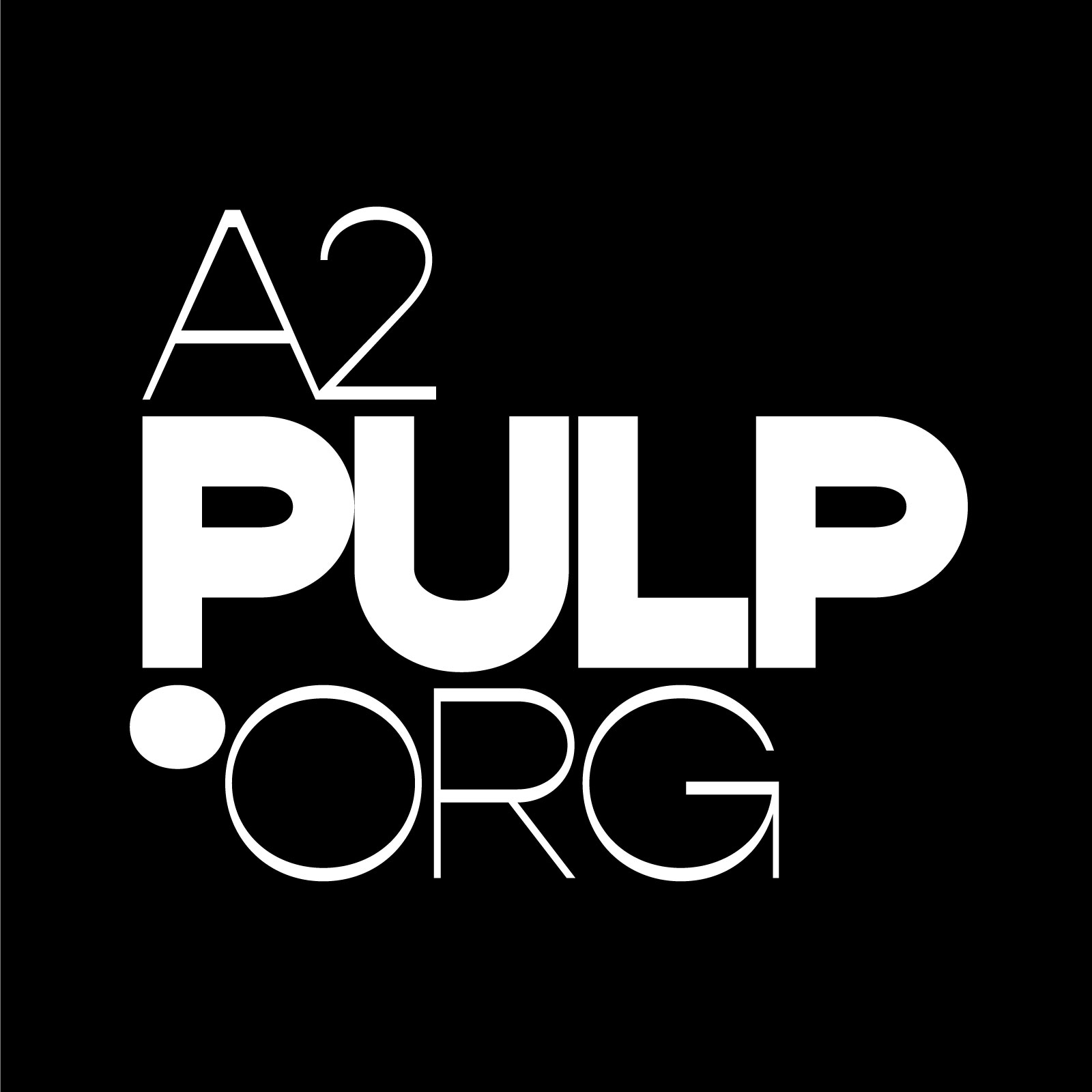Writing in the Rust Belt: Mark Athitakis, author of "The New Midwest"

Fiction about the Midwest, much like the region itself, often suffers from incorrect assumptions by outsiders and a dated external -- and internal -- monologue.
In The New Midwest: A Guide to Contemporary Fiction of the Great Lakes, Great Plains, and Rust Belt, author Mark Athitakis challenges those assumptions, and he points to authors whose work pushes against common regional tropes. He also sets the record straight about the Midwest itself, which boasts its own brand of cultural, racial, and political diversity, for better or for worse.
We spoke with Athitakis -- who will give a reading at the downtown branch of AADL on Friday, June 2 -- about his book and his own perspectives on the Midwest and its writing.
Q: What made you want to write The New Midwest?
A: I write for a website called Belt Magazine and my editor Anne Trubek had been encouraging me to write about Midwestern fiction because she thought that no one was really writing about it in a sort of comprehensive way. And the more time I spent working on the column, the more I had interest in how much contemporary Midwestern fiction was kind of flouting the clichés that we attach to the genre usually. So when Anne Trubek was starting this series of books that were going to be sort of short cultural takes on Midwestern culture, we talked a lot about what a book like this would look like. We didn’t have a lot of back and forth about what the structure of it would be or what the audience for it was. Really, the main thing was just this tickle in the back of my brain that said that when people write about Midwestern fiction they’re still kind of stuck in a rut of Ernest Hemingway and Theodore Dreiser and maybe Saul Bellow if they are thinking a little bit more forward. I think it really required an update into the late 20th and early 21st century.
Q: You talk about that in your book. You talk about how the Midwest is sort of considered stuck in the past and it’s “persistently rural.” You tell the story in the introduction about Joe Buck announcing a White Sox World Series game referring to the stockyard workers in Chicago, when there hadn’t been operating stockyards there for years. Do you think it’s important to change this perception of the Midwest?
A: Well, it’s funny because this book was an accidental beneficiary of its time. When it came out in February, I think that everybody wanted to have a conversation about, "Oh my goodness, we weren’t expecting what happened in the Midwest in the last election, that so many voters or that so many states had voted for Trump," and there was the misunderstanding like, "Oh my god, what happened in this region? We always thought that it was so solidly Democratic and so solidly working class." And I think one thing that my book accidentally did was point out that, no, there’s kind of a lot of different roiling differences and attitudes here and it’s a much more complicated place. It’s much more complicated politically, it’s much more complicated racially just in terms of the makeup of who is in the Midwest. (The book) helps, in regard to the notion of why it’s important to rethink that and in terms of being honest about what is actually happening in this region. And I think that that’s something that the writers who write about the Midwest are wrestling with as well.
Q: I think that even though there is a surprising amount of diversity in the Midwest, it’s still different setting a novel here than it is setting one in New York or California because there’s just not the same amount of options for diversity and for characters here. Do you think that’s true? Or am I incorrect about that?
A: I think that diversity plays out in a different way (in the Midwest). I think that there is maybe more of an assumption in writing about the West Coast or in New York that you’re going to be in a pluralistic kind of place, a place that’s going to be accommodating people from different backgrounds. It can be a little bit different when you’re writing about the Midwest though. A couple books immediately pop up in my mind in thinking about that. One is Dinaw Mengestu’s All Our Names about an African refugee who comes to central Illinois and is immediately faced with that kind of Midwestern version of “nice” racism where there’s nothing necessarily aggressive happening but the ostracism kicks in pretty quickly. The other novel that comes to mind on that front is Rachel Louise Snyder’s What We’ve Lost Is Nothing, which is about a white-bread Chicago suburb and who they reflexively blame when there’s a series of robberies in their neighborhood. They want to blame the African-American community that’s one neighborhood over. Are they being too reflexive in that? What sort of racism does that reflect? There’s much more anxiety with living with diversity and living with complexity than there might be in other places.
Q: You talk about a lot of books that have family as a central theme. You talk about Angela Flourney’s The Turner House, Dean Bakopoulos’ Summerlong, even going back to Laura Ingalls Wilder. Why do you think that the family plays such a prominent role in a lot of the Midwestern writing?
A: I don’t know necessarily that writers are explicitly trying to comment on the cliché of the nuclear family, but in many ways they do. The really strong example for me of that is Jane Smiley. I love talking about Jane Smiley just because, first of all, I think that she, for whatever reason, is not discussed in the same way as a great American writer who does a lot of interesting, fascinating things (should be), the way that we talk about your Jonathan Franzens or your Don DeLillos. But I think that she also has done a lot of work to kind of undo this notion of families, or rural families especially, of being very "just so," of being very nuclear. A Thousand Acres is King Lear transplanted to an Iowa cornfield and she wrote this tremendous Hundred Years trilogy following this Iowa farm family across the entire 20th century. And the subtle point that comes across once you’ve read all three books is that it’s not an Iowa home-and-hearth family story, it’s the American story. Everything that we talk about in terms of changes that have happened in government, in military, climate change, everything --
it’s ground zero for all of those things. And I think that there is something very pointed in Jane Smiley wanting to write that book because I think that it really explicitly wants to say, "Hey, everything that you thought about Iowa farm families is actually a lot more complicated and takes in a lot more things than you expected."
Q: You don’t live in the Midwest anymore, you live in Arizona.
A: Yes, I live in Arizona, just outside of Phoenix.
Q: Did you feel confident still writing this book not living here anymore?
A: It’s interesting. I lived more than half my life in the Midwest. I grew up outside of Chicago and went to college in Chicago and moved back there for a time as well. I still keep up, and I think also what happens living here in Arizona is that Chicago follows me. A lot of the restaurant chains and retirees and people move out here. You still feel a little bit of that Chicago, Midwestern attitude, which I would have to think a little bit about how to actually articulate, but I still feel, as a reader, as someone who reads a lot of fiction, that reading a book that’s set in the Midwest is striking a different tone and a little bit of a different attitude, with different concerns than other books that I read. And I read about 140 books a year so I still feel like I’m still steeped in that culture a little bit.
Q: You said that you didn’t have a vision for this book right when you started but now that it’s done and it’s published what are your hopes for it? What do you want people to take away from it? Who do you want to read it?
A: When I was talking I mentioned earlier that I was talking with Anne (Trubek) and asking what this book is about and who it’s for. I think it serves two purposes. People who read a lot of literary criticism may welcome the opportunity to think a little bit about Midwestern fiction that moves their idea of the genre a little bit forward. On top of that, my main goal is that I would love it if people just found additions to their reading list (through the book. When I structured the book, I thought at first maybe it should just be an alphabetical list of authors, or maybe it could be broken up by states or regions or cities, and then I thought that maybe the best way to attack is just to (talk about) the common tropes that do exist in Midwestern literature and how writers are approaching it now. I thought that would be kind of the most stimulating way to approach it. My hope really is that if readers page through it and spend time with it and take a look at some of those connections between the past and the present, they might find a few new or newer books that might fit what they’re looking for.
Q: It’s a pretty slim volume, considering. Was there a temptation to make it much longer?
Q: (Laughs) It is so frustrating, because you know, once I sent that book out the door, it’s like, "Can we do a second edition because there’s so many things that I would love to add or include or talk about a little bit more." So there was certainly that instinct to want to do that, but I also intended it to be short because we wanted it to be accessible and manageable. It’s not meant to be a heavy academic tome that’s about Midwestern fiction; it’s more a 30,000-foot view of things that are happening within (Midwestern fiction) now. Really, because I wanted to reach to a broader audience, I didn’t want it to be intimidating or academic. I would rather people spend more time reading the fiction that they enjoy than reading about the fiction. So, spend a little time with me, but a lot of time with those other authors.
Elizabeth Pearce is a Library Technician at the Ann Arbor District Library.
Mark Athitakis will discuss his book "The New Midwest" at the Downtown Library Multipurpose Room on Friday, June 2, from 7-8:30 pm. Books will be available for sale at the event, which is free and open to the public.


































